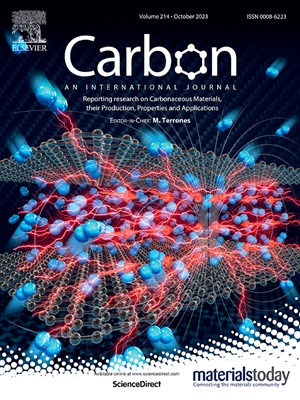In-situ grown NiFeLDH nanosheets over nitrogen rich amorphous carbon nanotubes: An electrochemical sensing platform for the detection of depression biomarker
IF 10.5
2区 材料科学
Q1 CHEMISTRY, PHYSICAL
引用次数: 0
Abstract
In this work, intrinsic conductivity mismatch of NiFe layered double hydroxide (NFL) catalysts and agglomeration of nanosheets were addressed by introducing N doped carbon nanotubes (NCNTs) which improves catalytic activity. Using a one-step wet chemical process, CNT-supported NiFeLDH nanosheets (NFL/NCNTx, x = 20, 50 and 100) were effectively created. This work delves into the lower level sensitive electrochemical detection of serotonin (5-HT) by utilizing synergy of CNT and LDH. The modified NFL/NCNT exhibits better electrochemical activity, appreciable sensitivity and spanned a concentration range of 0.01–400 μM with detection limit stood at 1.2 nM due to the plethora of electrochemical active surface area, remarkable conductivity and appreciable stability. Impressively, 96.0–96.8 % and 96.7–97.2 % recovery rates achieved in human urine and serum samples were well close to HPLC data, signifying its feasibility for real-time monitoring. The operational stability of the proposed sensor retained up to 89.13 % for 6 weeks. The present study highlights that tailoring NFL-NCNT heterojunction is an important strategy for the development of active and stable sensing platform.
富氮无定形碳纳米管上原位生长的 NiFeLDH 纳米片:用于检测抑郁生物标记物的电化学传感平台
本文章由计算机程序翻译,如有差异,请以英文原文为准。
求助全文
约1分钟内获得全文
求助全文
来源期刊

Carbon
工程技术-材料科学:综合
CiteScore
20.80
自引率
7.30%
发文量
0
审稿时长
23 days
期刊介绍:
The journal Carbon is an international multidisciplinary forum for communicating scientific advances in the field of carbon materials. It reports new findings related to the formation, structure, properties, behaviors, and technological applications of carbons. Carbons are a broad class of ordered or disordered solid phases composed primarily of elemental carbon, including but not limited to carbon black, carbon fibers and filaments, carbon nanotubes, diamond and diamond-like carbon, fullerenes, glassy carbon, graphite, graphene, graphene-oxide, porous carbons, pyrolytic carbon, and other sp2 and non-sp2 hybridized carbon systems. Carbon is the companion title to the open access journal Carbon Trends. Relevant application areas for carbon materials include biology and medicine, catalysis, electronic, optoelectronic, spintronic, high-frequency, and photonic devices, energy storage and conversion systems, environmental applications and water treatment, smart materials and systems, and structural and thermal applications.
 求助内容:
求助内容: 应助结果提醒方式:
应助结果提醒方式:


